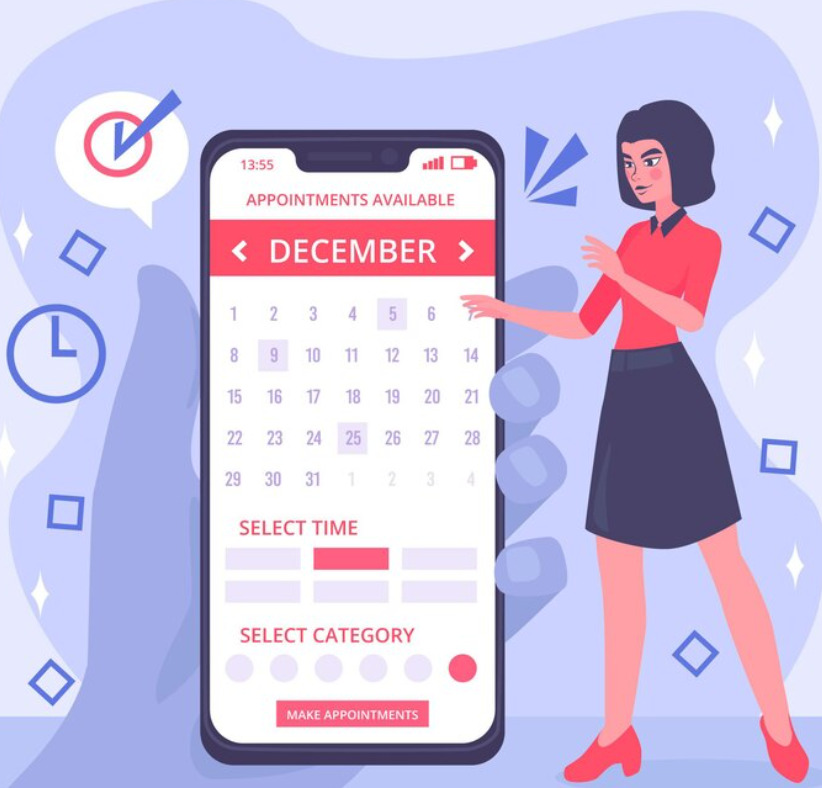In the modern workforce, providing working mothers with extensive maternity leave policies transcends legal obligations, becoming a strategic priority for companies seeking to enhance diversity, equity, and inclusion. Maternity leave is essential in nurturing a supportive workplace culture, reflecting a company’s dedication to the health and balance between work and personal life of its employees.
This article explores the complexity of maternity leave, highlighting its advantages, legal requirements, and implementation tactics, ultimately advising employers on creating a workplace that genuinely backs working mothers.
Understanding Maternity Leave
Maternity leave refers to the period of time a working mother takes off from her job for the birth, adoption, or foster care placement of her child. This leave is crucial for the health and well-being of both the mother and the child, providing necessary time for recovery, bonding, and adjustment to new family dynamics.
The Importance of Maternity Leave
- Health Benefits: Adequate maternity leave is essential for the physical and mental health of mothers. It allows time for recovery from childbirth and reduces the risk of postpartum depression.
- Child Welfare: It supports crucial bonding time between the mother and the newborn, which is vital for the child’s emotional and physical development.
- Workplace Equality: Offering maternity leave helps level the playing field in the workplace, ensuring women are not penalized for their choice to have children.
- Retention and Talent Attraction: Organizations that offer generous maternity leave policies are more likely to retain talented employees and attract new ones, reducing turnover costs and enhancing employer branding.
Legal Frameworks around the World
Maternity leave laws vary significantly across countries, reflecting differing societal values, economic conditions, and political structures. Here are some notable examples:
- United States: Under the Family and Medical Leave Act (FMLA), eligible employees are entitled to 12 weeks of unpaid leave. However, some states have enacted laws providing paid leave.
- Canada: Offers up to 15 weeks of maternity benefits through the Employment Insurance program. With the possibility of extending parental leave up to 18 months at a reduced benefit rate.
- United Kingdom: Maternity leave is up to 52 weeks, with 39 weeks paid, though the pay rate decreases over time.
- Sweden: Known for its generous parental leave policies, Sweden offers 480 days of parental leave, which can be shared between parents, with 90 days reserved specifically for each parent.
Best Practices for Implementing Maternity Leave Policies
- Compliance and Beyond: Adhere to local and national laws as a baseline, but consider exceeding legal requirements to demonstrate your commitment to employee welfare.
- Flexibility: Offer flexible returning-to-work options, such as part-time work or telecommuting, to ease the transition for new mothers.
- Communication: Ensure policies are clearly communicated and easily accessible to all employees. Regular training sessions can help managers understand their role in supporting employees taking maternity leave.
- Support Systems: Create support networks or mentorship programs for returning mothers, helping them to reintegrate into the workplace more comfortably.
Building a Culture of Care
Fostering a culture that supports working moms requires a holistic approach:
- Leadership Buy-in: Leadership should openly support maternity leave policies, setting the tone for an inclusive workplace culture.
- Inclusive Policy Design: Involve diverse groups of employees in the policy design process to ensure it meets the needs of all parents, not just mothers.
- Regular Review: Policies should be regularly reviewed and adjusted based on feedback and changing workforce dynamics.
Comparative Analysis: The Impact of Maternity Leave Policies on Organizations
The approach companies take towards maternity leave policies can significantly influence their organizational health, employee retention, and overall satisfaction. This comparative analysis highlights the differences between companies with robust maternity leave policies and those with minimal or no policies, underscoring the tangible benefits of supporting working mothers.
Companies with Robust Maternity Leave Policies
Employee Retention: Companies that offer comprehensive maternity leave policies often see higher employee retention rates. When employees feel supported during significant life events, such as the birth of a child, they are more likely to remain loyal to the company. For instance, a study by the National Bureau of Economic Research found that women who take maternity leave are more likely to be employed by the same employer one year after giving birth compared to those who do not take leave.
Employee Satisfaction: These companies typically report higher levels of employee satisfaction and engagement. Generous maternity leave policies contribute to a positive workplace culture that values work-life balance. Leading to increased job satisfaction among all employees, not just mothers.
According to a survey by Glassdoor, companies that prioritize work-life balance. Including offering flexible maternity leave options, tend to have higher satisfaction ratings among their workforces.
Company Performance: While it might seem counterintuitive, investing in maternity leave can lead to better overall company performance. Employees who feel supported are more engaged, productive, and motivated. A report by McKinsey & Company highlights that companies with high levels of diversity and inclusion. Which include supportive maternity leave policies, are 35% more likely to outperform their competitors.
Companies with Minimal or No Maternity Leave Policies
Employee Retention: These companies often struggle with higher turnover rates, especially among female employees. The lack of support for working mothers can lead to a difficult choice between career and family. Resulting in valuable talent leaving the workforce.
The cost of employee turnover not only affects the company’s bottom line due to the expense of recruiting and training new staff. But also impacts team morale and productivity.
Employee Satisfaction: Companies with minimal maternity leave policies tend to have lower employee satisfaction scores. The absence of adequate support for work-life balance can lead to increased stress and burnout among employees. This dissatisfaction can ripple through the workplace, affecting morale and the overall work environment.
Company Performance: A lack of supportive policies, including maternity leave, can negatively impact company performance. The inability to attract and retain talented employees can lead to gaps in expertise and a less diverse workforce. Limiting innovation and growth. Furthermore, companies that do not support working mothers may face reputational damage. Making it harder to attract top talent in the future.
Frequently Asked Questions (FAQ)
What is the primary purpose of maternity leave?
Maternity leave exists to provide working mothers with time to recover physically and emotionally from childbirth while allowing them to bond with their newborns. It also ensures that women do not have to choose between maintaining their health and keeping their jobs. Beyond physical recovery, maternity leave promotes mental well-being, reduces stress, and supports the transition to new family dynamics. From an organizational perspective, it fosters employee loyalty, engagement, and long-term retention.
How does maternity leave differ from parental leave or paternity leave?
Maternity leave specifically applies to mothers before and after childbirth, focusing on recovery and infant care. Parental leave, on the other hand, is a broader term that includes both parents, biological, adoptive, or foster, and can be shared depending on company policy or national law. Paternity leave refers to the time fathers or partners take off after the birth or adoption of a child to support their families. Many modern organizations now offer gender-neutral parental leave policies to encourage shared caregiving responsibilities and promote workplace equality.
Why is maternity leave important for businesses, not just employees?
Supporting maternity leave is both a moral and strategic decision for employers. Companies that offer robust maternity leave policies experience:
-
Higher retention rates: Mothers are more likely to return to work after childbirth if they feel supported.
-
Enhanced productivity: Employees who take adequate leave return more motivated and focused.
-
Improved company reputation: Organizations known for family-friendly policies attract top talent.
-
Stronger diversity and inclusion: Supporting mothers encourages gender equality and leadership diversity.
In essence, maternity leave contributes directly to organizational resilience, morale, and performance.
What are the typical components of a comprehensive maternity leave policy?
A strong maternity leave policy usually includes:
-
Eligibility criteria (e.g., length of service or employment status).
-
Duration of leave (ranging from several weeks to months, depending on jurisdiction).
-
Pay structure, specifying whether the leave is fully paid, partially paid, or unpaid.
-
Job protection, ensuring that the employee can return to her role or an equivalent position.
-
Health and insurance benefits, which may continue during leave.
-
Flexibility upon return, such as phased reintegration or remote work options.
Clearly outlining these components ensures transparency and builds employee trust.
How do maternity leave laws vary across countries?
Maternity leave regulations differ widely depending on national legislation, cultural values, and economic conditions. For instance:
-
In the United States, the Family and Medical Leave Act (FMLA) provides up to 12 weeks of unpaid leave for eligible employees. Some states, like California and New York, offer paid options.
-
Canada provides up to 15 weeks of paid maternity benefits, with extended parental leave options lasting up to 18 months.
-
In the United Kingdom, mothers can take up to 52 weeks of leave, with 39 weeks paid at varying rates.
-
Sweden leads globally, offering 480 days of shared parental leave with guaranteed pay, promoting gender equality.
These differences highlight the importance of understanding both local legal obligations and best-in-class international standards when designing company policies.
What can employers do to go beyond legal compliance in maternity leave policies?
Employers can enhance maternity leave policies by exceeding the legal minimums to demonstrate genuine care for employees. This can include:
-
Extending paid leave beyond statutory limits.
-
Offering flexible or phased return-to-work programs.
-
Providing access to counseling, lactation rooms, and wellness programs.
-
Creating mentorship programs for new mothers.
-
Extending benefits to adoptive and surrogate parents.
Going beyond compliance not only builds goodwill but also differentiates the company as a family-oriented and inclusive employer of choice.
How can organizations support employees returning from maternity leave?
Returning to work after maternity leave can be emotionally and logistically challenging. Employers can ease this transition by:
-
Offering gradual reintegration options, such as part-time schedules or hybrid work.
-
Encouraging open communication about workload adjustments and expectations.
-
Providing childcare support or partnerships with daycare centers.
-
Establishing peer support networks where returning mothers can connect and share experiences.
-
Training managers to show empathy and understanding during this period.
These actions help mothers regain confidence, reduce stress, and re-engage productively with their roles.
What are some common misconceptions about maternity leave?
One misconception is that maternity leave only benefits mothers, it actually benefits the entire organization. Employees who feel supported return with greater loyalty and motivation. Another misconception is that maternity leave is too costly; in reality, the cost of replacing a skilled employee often exceeds the temporary cost of providing leave. Additionally, some assume that maternity leave discourages women from leadership roles, but studies show that supportive policies increase female representation in senior positions.
How can small and medium-sized businesses offer maternity leave without financial strain?
While smaller businesses may face budgetary constraints, they can still design effective maternity leave programs by:
-
Using government-backed programs that subsidize maternity benefits.
-
Implementing flexible scheduling instead of long paid leaves.
-
Creating job-sharing options to maintain productivity.
-
Offering unpaid leave with job protection, showing goodwill even if paid leave isn’t feasible.
The key is clear communication, fairness, and flexibility, showing empathy without overextending resources.
What role does leadership play in promoting maternity leave culture?
Leadership commitment is vital in normalizing maternity leave as part of workplace culture rather than viewing it as a disruption. When leaders openly support family-friendly policies, it sends a clear message that caregiving responsibilities are valued and respected. Senior executives who model this behavior, by supporting flexible schedules, inclusive policies, and gender equality initiatives, set the tone for the entire organization.
Conclusion
Maternity leave is a vital aspect of modern HR policies, reflecting an organization’s commitment to supporting its employees through significant life changes. By implementing comprehensive, flexible, and supportive maternity leave policies, organizations can build a culture of care that benefits both employees and the business. This not only aids in attracting and retaining talent but also promotes a healthier, more inclusive, and productive workplace.











